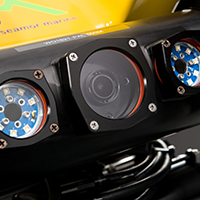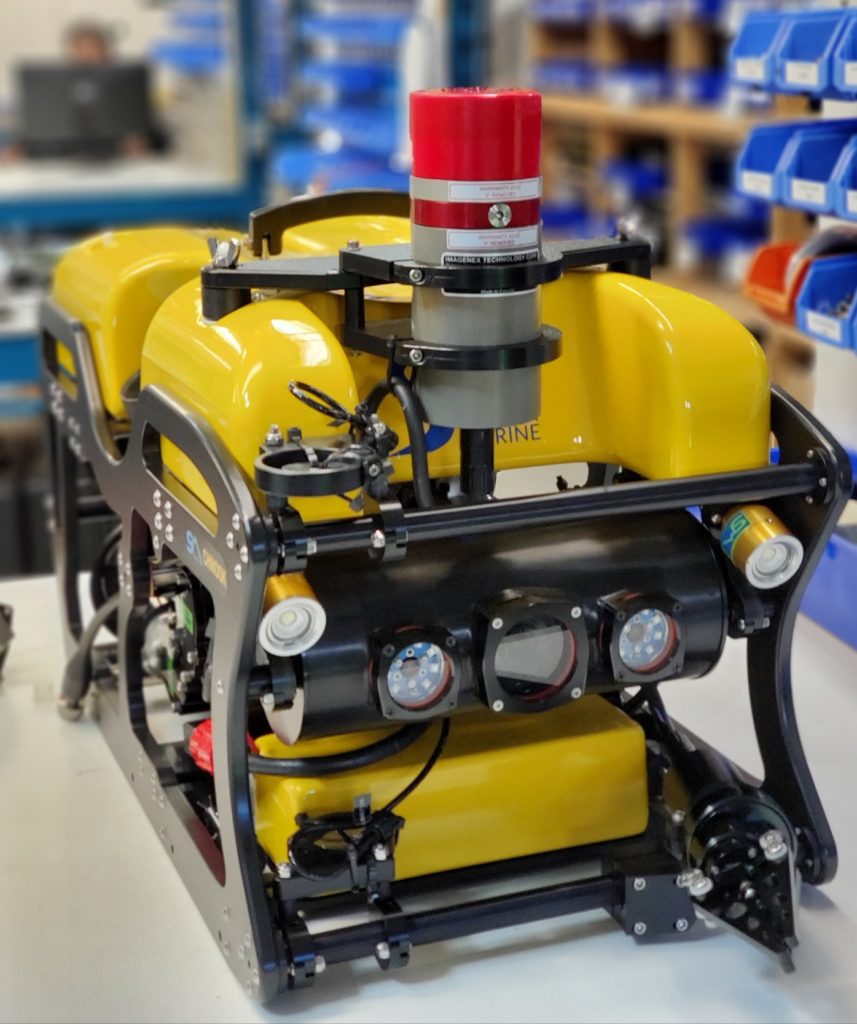Both HD and 4K cameras have their own advantages and limitations in the realm of ROVs. Beyond resolution, white balance, color corrections, and optical zoom are also crucial factors that determine the effectiveness of the cameras. The choice between the two depends on various factors and considerations related to the specific mission and operational requirements. In a previous post, we discussed our Marine Auxiliary Camera. This time, we’ll delve deeper into the benefits of each camera type while highlighting these additional features.
BANDWIDTH AND DATA HANDLING
HD cameras capture lower-resolution video compared to 4K cameras, leading to smaller file sizes and requiring less bandwidth for transmission. This is an advantage when operating in environments with limited cloud access or power sources. Moreover, managing, processing, and storing HD video data can be more efficient, especially for real-time video or quick data analysis. White balance and color corrections also play into this, as accurate color representation is essential for many marine tasks. At SEAMOR Marine, our standard models use HD cameras, but the choice is yours to make.
OPTICAL ZOOM
Having a built-in optical zoom is a game-changer, especially in underwater scenarios where getting closer physically to an object may not always be feasible. The ability to zoom can make all the difference in clarity, especially in 4K which retains more detail even when zoomed in.
REAL-TIME TRANSMISSION
Transmitting HD video requires less bandwidth than 4K, offering stable and high-quality real-time video feeds. Underwater missions, especially in bandwidth-constrained environments, benefit immensely from HD cameras.
COMPUTATIONAL RESOURCES
While 4K video demands more from onboard computers and systems, HD remains a practical choice for limited computational resources. But remember to factor in the need for color corrections and white balance adjustments, which can also be computationally intensive.
STORAGE
4K video data takes up more storage space than HD. Depending on the mission’s objectives, like capturing pristine marine life videos, you might prioritize resolution over storage constraints.

COST
HD cameras are more wallet-friendly than their 4K counterparts. This cost-effectiveness extends to related equipment like storage and processing hardware.
OPERATIONAL FLEXIBILITY
In some missions, the detailed imagery from 4K cameras might not be vital. HD cameras, especially with proper white balance and color corrections, can offer crisp imagery for many inspection tasks. Notably, in less than ideal conditions, HD cameras with their larger pixel sizes can produce clearer imagery. The fine particles in the water don’t degrade the video quality, especially when paired with SEAMOR ROVs’ outstanding lighting.
Interested in learning what camera is best for your operation? Reach our team today

